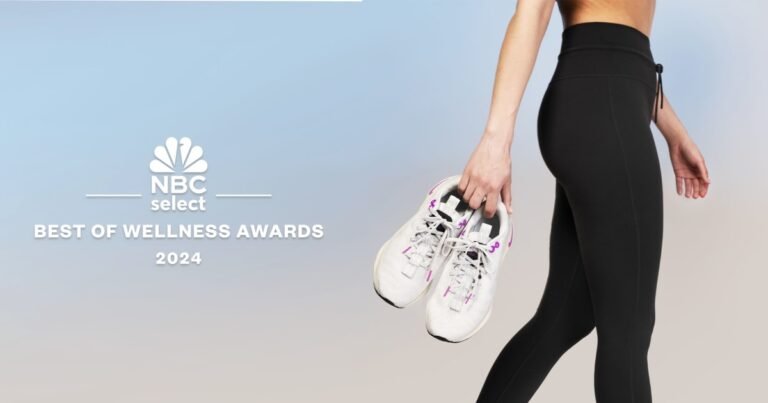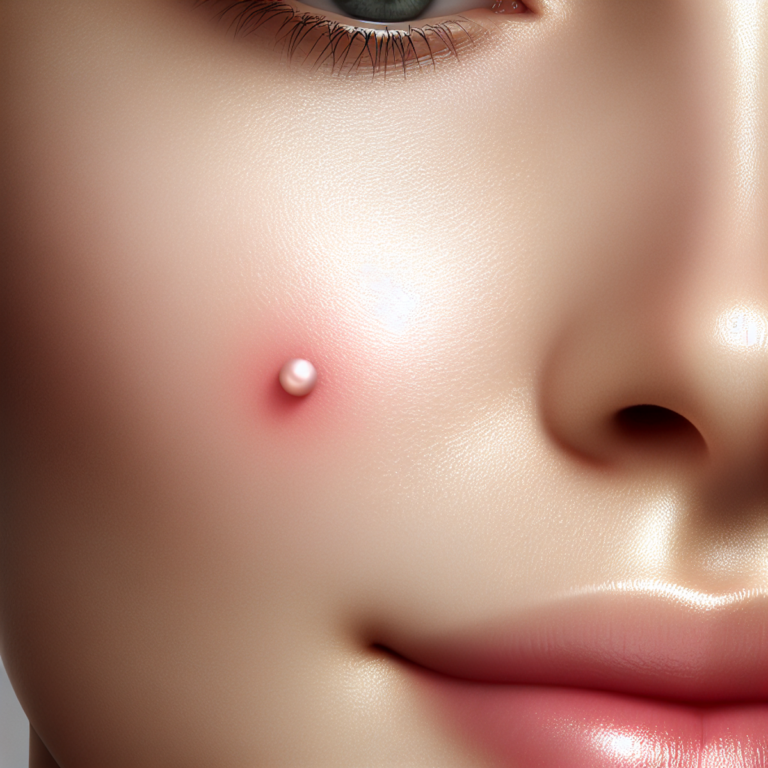how to make pimples go away

Introduction
Dealing with pimples can feel like an endless battle against your own skin. You’re not alone – millions face this common skin issue daily, from teenage acne to adult breakouts. The good news? Multiple effective treatment options exist to help you regain clear, healthy skin.
Your journey to clearer skin starts with understanding the available treatments:
- Topical Solutions: From over-the-counter creams to prescription medications
- Natural Remedies: Tea tree oil, green tea, and other gentle alternatives
- Professional Treatments: Dermatologist-administered procedures for stubborn cases
- Lifestyle Changes: Diet modifications and stress management techniques
- Preventive Care: Daily skincare routines and hygiene practices
These methods work differently for each person – what clears one person’s skin might not work for another. The key lies in finding the right combination of treatments for your specific skin type and condition.
The path to clear skin requires patience and consistency. With the right knowledge and tools, you can effectively tackle those unwanted bumps, whether they appear on your face, forehead, or other body parts. Let’s explore these treatment options in detail to help you achieve the clear, confident skin you deserve.
Understanding Pimples
Pimples are small, inflamed spots that develop when your skin’s pores become clogged with oil, dead skin cells, and bacteria. These blemishes can appear anywhere on your body, with common areas including your face, back, and chest.
Types of Pimples:
- Blackheads: Open bumps with dark surfaces caused by oxidized melanin
- Whiteheads: Closed bumps with white or flesh-colored tops
- Pustules: Red, tender bumps filled with white or yellowish pus
- Papules: Small, red, raised bumps without pus
- Nodules: Large, painful bumps deep under the skin
- Cysts: Deep, pus-filled bumps that can cause scarring
What Causes Pimple Formation?
Your skin naturally produces an oil called sebum through sebaceous glands. This process can go into overdrive due to several factors:
Hormonal Changes
- Puberty
- Menstrual cycles
- Pregnancy
- Stress
External Factors
- Excessive sweating
- High humidity
- Certain medications
- Heavy skincare products
The formation process begins when excess oil combines with dead skin cells, creating a plug in your pore. Bacteria called P. acnes can multiply within this plugged pore, leading to inflammation and swelling.
Risk Factors for Breakouts:
- Genetics – Family history can increase your likelihood of developing acne
- Diet – High-glycemic foods may trigger breakouts
- Lifestyle habits – Touching your face frequently or using dirty phone screens
- Environmental factors – Pollution and high humidity
- Cosmetic products – Heavy or pore-clogging makeup
Understanding your specific type of pimples and their triggers helps you choose the most effective treatment methods. Different pimple types respond to different treatments, making accurate identification crucial for successful management.
Topical Treatments for Pimples
Topical treatments are the first line of defense against stubborn pimples, providing targeted solutions for various skin concerns. These treatments work directly on affected areas to fight bacteria, reduce inflammation, and promote healing.
1. Benzoyl Peroxide
Benzoyl peroxide is a widely used topical treatment for acne. Here’s what you need to know about it:
- Available in 2.5% to 10% concentrations
- Kills acne-causing bacteria within the pores
- Helps reduce excess oil production
- Best used as a spot treatment or all-over face wash
- Start with lower concentrations to minimize irritation
2. Salicylic Acid
Salicylic acid is another effective ingredient for treating pimples. Here’s how it works:
- Penetrates deep into pores to dissolve dead skin cells
- Prevents future breakouts by maintaining clear pores
- Works effectively on blackheads and whiteheads
- Available in concentrations from 0.5% to 2%
- Can be found in cleansers, toners, and spot treatments
3. Tea Tree Oil
If you prefer natural remedies, tea tree oil can be a great option. Here’s what you should know:
- Natural alternative with antibacterial properties
- Must be diluted with carrier oil before application
- Reduces inflammation and redness
- Helps dry out existing pimples
- Suitable for sensitive skin when properly diluted
Application Tips for Maximum Effectiveness
To get the most out of your topical treatments, follow these application tips:
- Cleanse your face thoroughly before applying any treatment
- Use a pea-sized amount for spot treatments
- Apply treatments in thin layers to avoid irritation
- Allow products to fully absorb before layering other skincare
- Always follow with moisturizer to prevent over-drying
Choosing the Right Treatment
Your skin type plays a crucial role in determining which topical treatment works best for you:
- Oily Skin: Benzoyl peroxide or salicylic acid
- Dry Skin: Lower concentrations of active ingredients
- Sensitive Skin: Tea tree oil or gentle formulations
- Combination Skin: Targeted spot treatments
Treatment Schedule
For optimal results, establish a consistent treatment schedule:
- Morning: Gentle cleanser + lightweight treatment
- Evening: Deep cleanse + stronger treatment
- Spot treat new pimples immediately
- Allow 4-6 weeks for visible improvement
Remember to patch test new products on a small area of skin before applying them to your entire face
Physical Treatments for Immediate Relief
Physical treatments offer quick relief from painful, inflamed pimples when you need fast results. These methods target the visible symptoms of acne without addressing the root cause.
Ice Application
- Wrap an ice cube in a clean cloth
- Apply to the affected area for 1-2 minutes
- Take a 5-minute break between applications
- Repeat 3-4 times
Ice therapy constricts blood vessels, reducing redness and swelling within minutes. This method works particularly well for forehead pimples and inflammatory acne.
Heat Treatment
- Use a warm compress on the affected area
- Apply gentle pressure for 10-15 minutes
- Repeat 2-3 times daily
Heat helps bring pimples to a head by increasing blood circulation. While this method soothes discomfort, it doesn’t eliminate the underlying infection.
Cortisone Injections
A dermatologist can inject diluted corticosteroids directly into large, cystic pimples. This treatment:
- Reduces inflammation within 24-48 hours
- Shrinks stubborn bumps
- Prevents scarring in severe cases
These injections are reserved for:
- Deep, painful cysts
- Special occasions requiring quick results
- Pimples resistant to other treatments
Remember to avoid squeezing or picking at pimples during physical treatments, as this can lead to scarring and spread bacteria to other areas of your face.
Home Remedies for Pimples
Natural remedies can be gentle yet effective solutions for treating pimples at home. These methods use easily available ingredients to fight acne-causing bacteria and reduce swelling.
Green Tea Applications
- Brew a strong cup of green tea and let it cool
- Apply the tea directly to affected areas using a cotton ball
- Leave it on for 10-15 minutes before rinsing
- The antioxidants and polyphenols help reduce sebum production
Tea Tree Oil Treatment
- Mix 1 part tea tree oil with 9 parts water
- Apply the diluted solution to pimples with a cotton swab
- Use twice daily after cleansing
- Known for powerful antibacterial properties
Additional Natural Solutions
- Honey mask: Apply raw honey directly to pimples for 15-20 minutes
- Aloe vera gel: Use fresh gel from the plant for its anti-inflammatory effects
- Apple cider vinegar: Dilute with water (1:3 ratio) and apply as a spot treatment
- Turmeric paste: Mix with water or honey for its antimicrobial benefits
Best Practices for Home Remedies
- Always perform a patch test before trying new treatments
- Use fresh, clean ingredients
- Be consistent with applications
- Stop using any remedy that causes irritation
- Store homemade treatments properly to prevent contamination
These natural solutions work best when combined with proper skincare habits and a healthy lifestyle. Their effectiveness varies from person to person, and results typically appear after regular use over time.
Preventive Measures to Avoid Breakouts
Smart prevention strategies can stop pimples before they start. Your daily skincare choices play a crucial role in maintaining clear, healthy skin.
Essential Makeup Practices:
- Choose non-comedogenic products labeled “oil-free” or “won’t clog pores”
- Replace makeup products every 3-6 months
- Clean makeup brushes weekly with gentle soap
- Remove makeup completely before bed using a double-cleansing method
Daily Hygiene Habits:
- Change pillowcases twice weekly
- Keep hair clean and away from face
- Avoid touching face throughout the day
- Use clean towels for face-drying
- Sanitize phone screens daily
Body Acne Prevention:
- Wear loose-fitting, breathable clothing
- Shower immediately after sweating
- Use antibacterial body wash
- Exfoliate gently 2-3 times weekly
- Keep skin moisturized with non-comedogenic lotions
Additional Prevention Tips:
- Clean glasses and sunglasses regularly
- Disinfect sports equipment that touches your face
- Use fresh washcloths for each cleanse
- Apply sunscreen daily to prevent post-inflammatory hyperpigmentation
- Stay hydrated by drinking adequate water
Remember to patch test new products on a small area of skin for 24 hours before full application. Your skin needs time to adjust to new routines, so maintain consistency with these practices for at least 4-6 weeks.
Long-term Management Strategies
Persistent or severe acne requires professional intervention. You need to consult a dermatologist if:
- Your acne persists after 12 weeks of over-the-counter treatments
- You develop deep, painful cysts or nodules
- Your breakouts leave significant scarring
- Your acne affects your mental health and self-esteem
A dermatologist creates personalized treatment plans using prescription-strength medications:
Topical Treatments
- Tretinoin: Speeds up cell turnover and prevents clogged pores
- Adapalene: Reduces inflammation and regulates skin cell growth
- Clindamycin: Fights acne-causing bacteria
Oral Medications
- Antibiotics: Doxycycline or minocycline for moderate to severe acne
- Isotretinoin: Reserved for severe, resistant acne cases
- Birth control pills: Help regulate hormonal acne in women
Your dermatologist might recommend combination therapy, using multiple treatments simultaneously for optimal results. Regular follow-up appointments help track progress and adjust treatments as needed.
Professional treatments like chemical peels, light therapy, or laser treatments can complement your medication regimen. These procedures target active acne and reduce scarring simultaneously.
Remember that prescription treatments require patience – visible improvements typically appear after 8-12 weeks of consistent use.
Lifestyle Factors Affecting Skin Health
Your daily habits play a crucial role in managing skin health and preventing breakouts. Stress triggers hormonal changes that increase oil production, leading to clogged pores and acne flare-ups. Here’s how lifestyle factors impact your skin:
Stress Management
- Practice deep breathing exercises or meditation
- Regular physical activity reduces cortisol levels
- Yoga combines stress relief with gentle movement
- Set boundaries to avoid overwhelming situations
Sleep Quality
- Aim for 7-9 hours of uninterrupted sleep
- Use silk pillowcases to reduce friction
- Keep your bedroom cool and dark
- Maintain a consistent sleep schedule
Dietary Influences
- High-glycemic foods can trigger breakouts
- Dairy products may increase inflammation
- Stay hydrated with 8-10 glasses of water daily
- Include omega-3 rich foods in your diet
Environmental Factors
- Shield your skin from excessive sun exposure
- Clean your phone screen regularly
- Change pillowcases twice weekly
- Keep hair products away from your face
These lifestyle adjustments create a foundation for clear, healthy skin. Implementing small changes in your daily routine can significantly reduce breakouts and improve your skin’s appearance. Track your triggers by keeping a skin journal to identify patterns between lifestyle habits and skin reactions.
Quick Fixes for Pimples
Need a rapid solution for an unexpected breakout? These emergency techniques can help reduce pimple size and appearance within hours:
- Ice Application: Press a wrapped ice cube against the pimple for 1 minute, rest for 5 minutes, repeat 3 times. This method constricts blood vessels, reducing redness and inflammation.
- Spot Treatment Masks: Create a quick paste using:
- Crushed aspirin + water
- Honey + turmeric
- Green tea bag (cooled) Apply for 10-15 minutes
- Hydrocolloid Patches: Place these specialized stickers on individual pimples before bed. They absorb excess fluid while protecting the area from bacteria and further irritation.
- Tea Bag Compress: Use a cooled black or green tea bag as a compress for 5-10 minutes. The tannins help reduce swelling and redness.
Pro Tip: Avoid squeezing or picking at pimples – this can lead to scarring and spread bacteria to other areas of your face.
Addressing Pimple Scars and Marks
Pimple scars require specific treatment approaches based on their type and severity. Topical treatments containing vitamin C, retinoids, or kojic acid can help fade dark spots and shallow scars.
Popular scar-fighting ingredients:
- Alpha-arbutin for hyperpigmentation
- Niacinamide to reduce redness
- Rosehip oil for tissue regeneration
- Glycolic acid for gentle exfoliation
Natural remedies can complement professional treatments:
- Raw honey masks
- Aloe vera gel applications
- Lemon juice spot treatments
- Potato slice applications
For deep, pitted scars, professional treatments yield better results:
- Microneedling sessions
- Chemical peels
- Laser therapy
- Dermal fillers
You can speed up scar healing by:
- Using sunscreen daily
- Staying hydrated
- Avoiding picking at healing spots
- Maintaining consistent skincare routines
Conclusion
Achieving clear, pimple-free skin requires a comprehensive strategy that goes beyond quick fixes. Your skin health reflects your daily habits, lifestyle choices, and skincare routine. A successful approach combines proper cleansing, targeted treatments, and preventive measures.
Remember these key principles for lasting results:
- Listen to Your Skin: Pay attention to what triggers your breakouts
- Stay Consistent: Follow your skincare routine religiously
- Be Patient: Results take time – expect 4-6 weeks to see significant improvements
- Seek Professional Help: Don’t hesitate to consult a dermatologist for persistent issues
Creating a personalized skincare plan that addresses your specific concerns will yield the best results. By incorporating healthy habits, using appropriate products, and maintaining good skin hygiene, you can effectively manage pimples and maintain clear, healthy skin for the long term.
Your journey to clear skin is unique – what works for others might not work for you. Stay committed to finding the right combination of treatments and lifestyle changes that suit your skin’s needs.
FAQs (Frequently Asked Questions)
What are some common methods to make pimples go away quickly?
Common methods to make pimples go away quickly include using topical treatments like benzoyl peroxide and salicylic acid, applying ice to reduce swelling, and utilizing cortisone injections for immediate relief. Additionally, home remedies such as green tea and tea tree oil can also be effective.
How do clogged pores lead to different types of pimples?
Clogged pores occur when excess oil, dead skin cells, and bacteria accumulate in hair follicles. This can lead to various types of pimples: blackheads form when the pore is open, whiteheads occur when it is closed, and pustules develop due to inflammation and infection.
What are some effective home remedies for treating pimples?
Effective home remedies for treating pimples include applying diluted tea tree oil, using green tea extracts, and creating DIY masks with natural ingredients like honey or aloe vera. These remedies often have antibacterial properties that help reduce inflammation and promote healing.
What preventive measures can I take to avoid breakouts?
To avoid breakouts, use non-comedogenic skincare products, maintain proper hygiene by cleansing your face regularly, remove makeup thoroughly before sleeping, and consider dietary adjustments. It’s also important to manage stress levels as they can trigger acne flare-ups.
When should I consult a dermatologist for pimple treatment?
You should consult a dermatologist if you experience persistent or severe acne that does not improve with over-the-counter treatments. A dermatologist can provide professional advice and prescribe medications such as topical retinoids or oral antibiotics tailored to your specific skin needs.
How can I address pimple scars and marks effectively?
To address pimple scars and marks effectively, consider using pimple scar removal creams that contain ingredients like retinoids or vitamin C. Natural treatments such as aloe vera or lemon juice may also help lighten scars. Consistent skincare routines focusing on exfoliation and hydration can further aid in reducing the appearance of scars.










